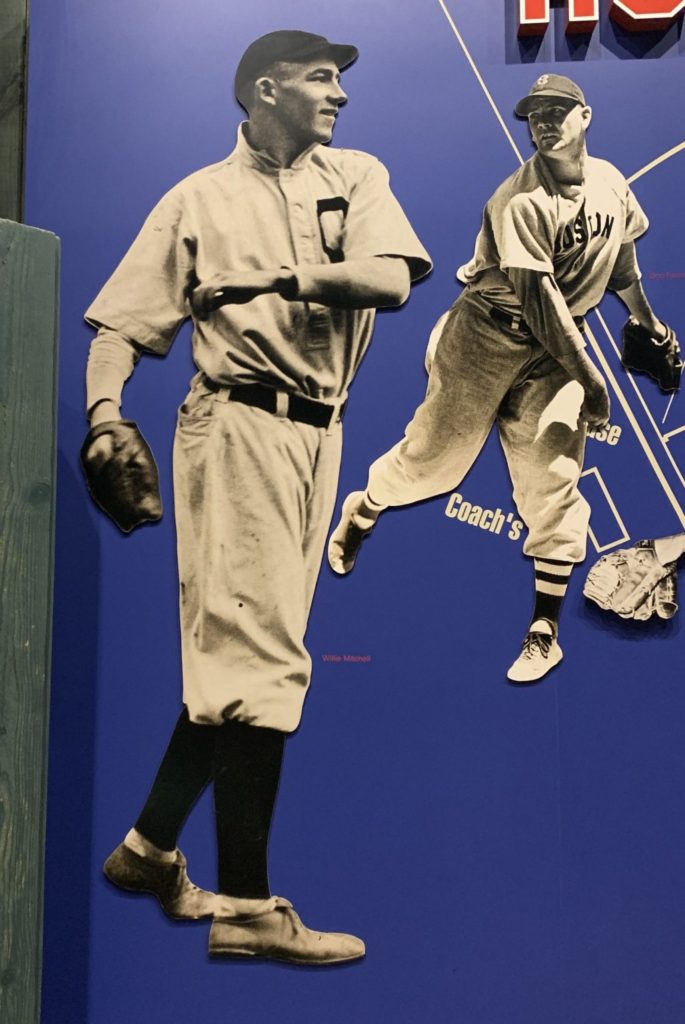In a season of baseball excellence, we should recall the ‘Willie Ball’
Posted on: April 19,2021

This article first appeared on mississippitoday.org and was written by Rick Cleveland.
Ole Miss and Mississippi State baseball teams will enter the weekend ranked in the top five in the nation in various polls. Southern Miss is in the top 25 of RPI ratings. Jackson State is undefeated in the SWAC. Delta State remains a Division II power.
Many assume this college baseball excellence is a relatively modern Mississippi phenomenon and that college baseball has become a point of state pride only in recent decades.
Such an assumption is dead wrong. Today’s story is about a Mississippian who pitched at Mississippi A&M, now Mississippi State, 112 years ago, long before metal bats, before luxury suites and before any pitch was known as a split-fingered fastball or a circle change. This was seven decades before Raffy and Will slugged for State, before Donnie and Archie went into the hole to throw out runners for Ole Miss. This was more than six decades before Ray Guy overpowered hitters for Southern Miss and Oil Can Boyd dazzled hitters for Jackson State. This was even three decades before the great Boo Ferriss became the first fully scholarshipped college baseball player in Mississippi.
This was even a few years before Casey Stengel, the New York Yankees’ “ol’ perfessor,” actually coached the Ole Miss baseball team. (That was in 1914. As Casey, himself would have told you: “You could look it up.”)
This is Willie Mitchell’s story and of all the wonderful history chronicled in the Mississippi Sports Hall of Fame, this is one of my favorite chapters. Mitchell made his way to Starkville in 1906 from the tiny Panola County town of Pleasant Grove (near Sardis). Willie apparently was an outstanding student, entering the college at age 16. By the time he was 19 and a senior, he had become something of a left-handed legend. Boo and Oil Can, future Boston Red Sox stars, would have nothing on Willie.
One spring weekend in 1909,the A&M baseball team took the train to Baton Rouge to face LSU in a doubleheader. Mitchell took the mound in the second game and pitched what must remain the most perfect game in the history of perfect games.
Mitchell struck out 26 of 27 LSU batters and retired the 27th on a ground ball to second base. You read right: Only one LSU batter hit a fair ball.
If you are wondering how Mitchell did it, the line forms behind the guy typing these words. One hundred and twelve years later, we have only hints. The Revielle, State’s yearbook, tells us Willie’s favorite pitch was “one that has a very sharp downward break, which is called the ‘Willie Ball’ for the simple reason that no batter has been able to connect with it.”
Was it a spitball, legal in those days? Was it a split-fingered fastball, before they knew there was such a thing? We will never know.
Now those Bulldogs – actually they were called Aggies then – were good. They would finish the 1909 season with a 22-4 record, which even today’s Bulldogs can appreciate. Willie Mitchell was better than good. He had a 6-1 record with 97 strikeouts in just 56 innings. Remember, he was only 19.
Naturally, professional scouts were intrigued. The Cleveland Indians – they were called the Naps then – won the prize and signed Willie. He started his pro career with San Antonio in the Texas League. Just a couple months after striking out 26 LSU hitters in one game, Willie struck out 20 Galveston Sand Crabs in a Texas League game. By September of 1909, still 19, he was in the Big Leagues.
One of his first games was against the Washington Senators and the legendary Walter “Big Train” Johnson, he of a record 417 Major League victories and one of the first five men inducted into the Baseball Hall of Fame. The Big Train got one of his 417 that day, but it took him 12 innings in a head-to-head battle with a 19-year old rookie. The Senators eked out a 2-1 victory.
WIllie Mitchell turned 20 three months later.
He went on to pitch 11 Major League seasons, most of those with bad baseball teams. He averaged 12 victories a year with an outstanding earned run average of 2.88. His best year was 1914 when he was 14-8 with a miniscule 1.98 earned run average. That season, he became the first Major League pitcher to strike out Babe Ruth. We can only assume he used the Willie Ball. Ruth, a pitcher then, won a 4-3 pitchers’ duel. A couple years later, Willie beat the Babe 1-0.
Of Mitchell, none other than Shoeless Joe Jackson said this: “Willie Mitchell is the hardest pitcher in the league for me to hit. He has a ball that looks like a balloon and the only thing I’ve ever been able to do is to get it on the handle and break all my bats. I’ve given up trying to hit him. The cost of bats adds up.”
Mitchell’s career was interrupted – and shortened – by injuries suffered in a Germany mustard gas attack in France during World War I. He tried to pitch, without much success, after the war.
He returned to Mississippi where he lived in Greenville and worked for many years for Standard Oil. He died in 1973 at the age of 83 near his childhood home in Sardis. Thankfully, the legend of Mitchell and his Willie Ball lives on.



